July is bare-rooted apple tree ordering time! It’s been a long wait, but we now feel confident that we have the water infrastructure, system establishment and knowledge in place to be able to grow apples (without killing them) at Milkwood Farm. Oh happy day.
As our forest garden slowly creeps across the hillside, greener and more dense with every season, I’m beginning to believe that our rocky ridge could truly one day be an edible forest garden and holistic orchard. And so it is time to chose the first batch of apple trees to plant. But which to chose?
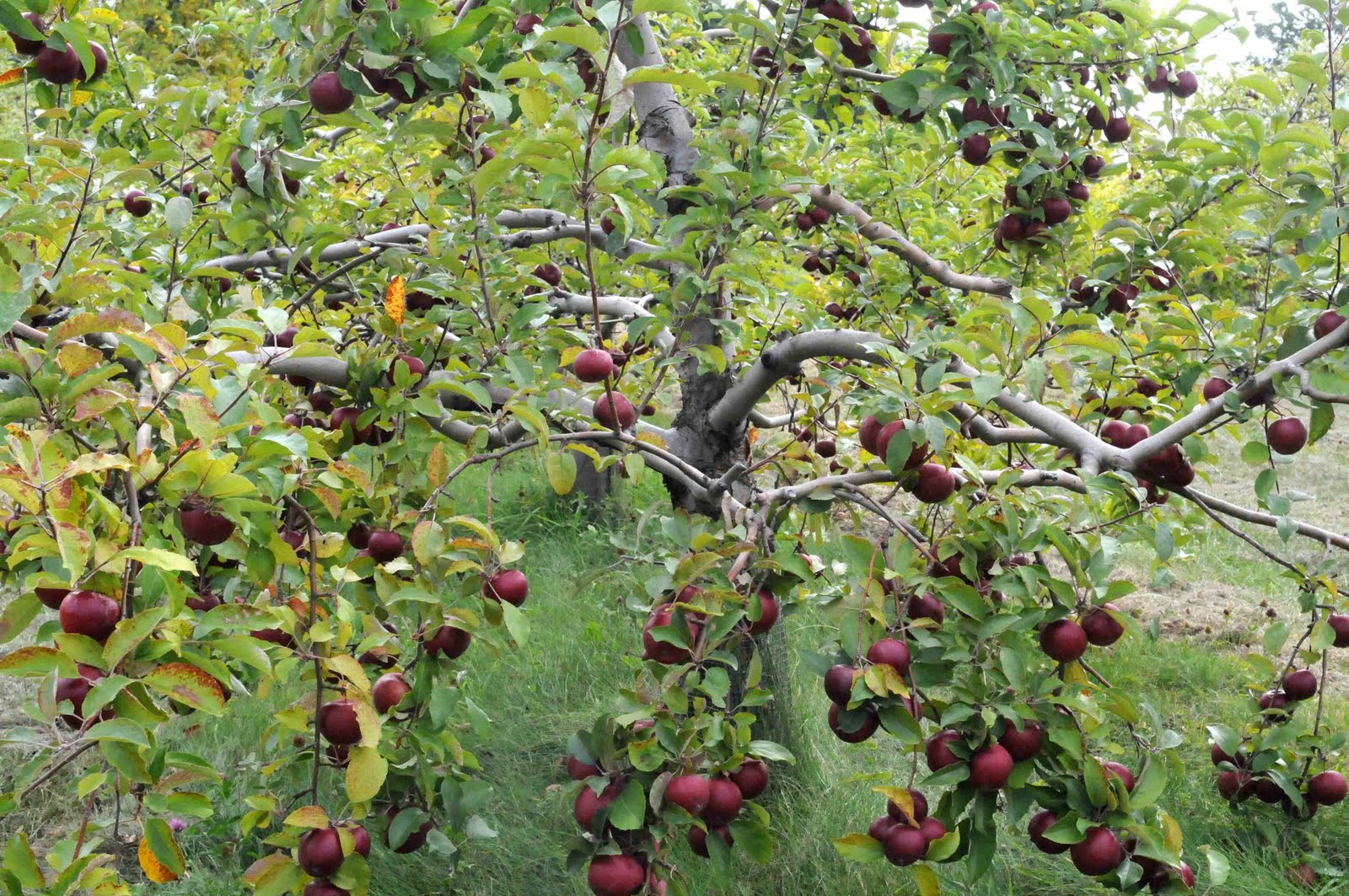
Black Oxford apples (not sure we can get this heritage variety in Australia, or if it would suit Milkwood Farm – still gorgeous!)
While a small part of me groans at the fact we didn’t plant all our fruit trees when we arrived at Milkwood Farm, the majority of me is very happy that we did not. We had no gravity-fed water and a severe drought those first 3 years, so in retrospect it was lucky we didn’t go crazy on the plantings.
Now, however, we have the beginnings of seriously useful infrastructure. A top dam for gravity-fed irrigation water to ensure our forest garden systems don’t cark it during the establishment years, and a forest gardener extraordinaire (Dan Harris Pascal) who’s taken on Milkwood Farm’s edible forest garden systems.
We’re also about to finally actually move onto Milkwood, and into the tinyhouse. This changes everything. The forest garden will now be at our back door, not over the hill and around the bend. The orchard will be where we pass through daily on our way to the chickens in the straw yard.
And so, what has been until now an ongoing design, planting and establishment exercise on a windswept hill (speaking about the forest garden here) which we’ve been cautious about investing too much energy into as we wouldn’t yet be able to tend it as a part of everyday rhythms, is about to transform into the ‘zone 2’ of our lives on a daily basis. Can you feel my excitement yet?
I digress. Apple trees. There are so many amazing ones. Which to chose?
Right now is a very good time to chose and procure you apple trees for temperate Australia. At this time of year you can buy them bare rooted, as the trees are dormant. Apples travel a lot better at this time of year due to their dormancy.
We’d like to grow a variety of apples that produce at different times, to stretch the Milkwood apple season out for as long as possible. We want varieties for eating, storing, cooking and drying. Some cider apples would make me very happy also.
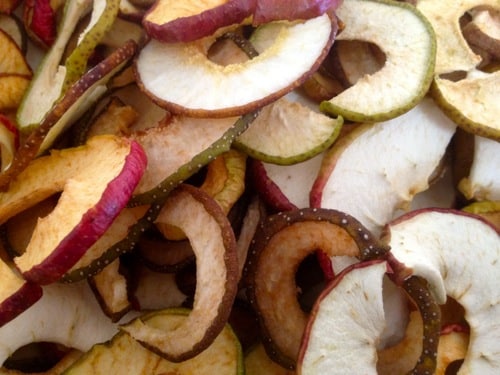
Dried apples, pear and nashi from last Autumn’s efforts, made with apples from the orchard down the road
Our production goal would be to have about 5kg total of apples coming off the various trees per day for as much of apple season as we can manage. This might sound like a lot but we have a lot of apple eaters at the farm these days. And last season I took some notes, and this is what i found we went through:
- During our on-farm PDCs, we go through about 10kg of eating apples per day (for 40-ish people).
- For a normal day with on-farm crew + wwoofers + interns, we go through about 1.5kg of apples per day.
- With my new fruit dryer (which i am in love with) i can process about 6-7kg of apples per load. We could easily do 1 load per day if need be.
- In the event of having too many apples (god forbid), we can convert them to bacon via piggies. I see no downside here.
Suitable varieties differ from climate to climate, but here’s my current best-guess of what we should get, based on advice from the Brookmans and Pete the Permie, and what I know does well near Mudgee from other orchardists (who are sadly not organic, so how useful their yields are as reference I don’t yet know).
For advice on what apple varieties would do best in our climate (600mm yearly rainfall, 780m altitude, low humidity, temperatures up to 35ºc in Summer down to a couple of -14ºc nights in Winter), I asked Pete the Permie who with his wife Sylvia are the heritage apple keepers at Mt Telopea Permaculture.
Heritage Apple Varieties suspected as suitable for Milkwood Farm:
- Akane – early ripening, crisp eating apple
- Blenheim Orange – mid season ripening, great eating
- Belle de Boskoop – mid to late ripening, good eating / cooking / drying apple
- Fuji – mid season ripening, juicy and crisp
- Granny Smith – mid season ripening, eater, cooker and excellent drier
- Cox’s orange Pippin – mid season, ‘UK’s best eating apple’
- Kidd’s Orange Red – lateish ripening (but not too late, so it won’t catch our heavier frosts) – good keeper and eater.
- Kingston Black – late ripener – world’s best all-round cider apple! Mmm cider.
What have we missed? Should we be preparing to poke our own eyes out rather than dare to consider not planting a {…insert amazing heritage apple variety, robustly suited to Milkwood Farm’s climate, here…} ?? Please tell me if you have any blazingly excellent suggestions.
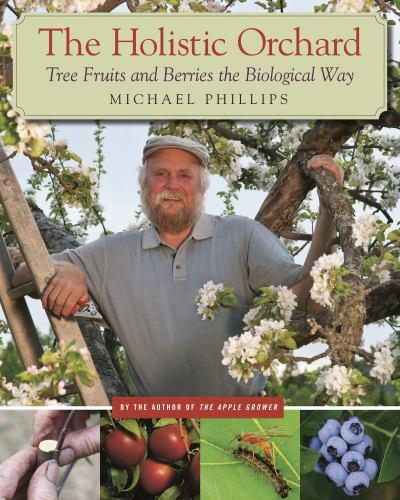
Another friend to me during this exciting but slightly daunting time of ‘getting it right’ in the apple department has been this book, which I am currently reading and enjoying bigtime: The Holistic Orchard: Tree Fruits and Berries the Biological Way by Michael Phillips.
This is a darn fine book. DARN fine, I say. It’s all about apples as a forest edge plant and is basically a master work on permaculture apple growing and holistic orcharding as an integrated ecosystem. Michael’s writing is easy to get along with and engaging – the whole book was a pleasure to read.
It’s also densely packed with hard-won knowledge and very important fundamentals about all aspects of apple growing, from the soil food web all the way up to arboreal fungus.It’s already filled in a bunch of holes in my knowledge that i didn’t know i had (specifically, ramial woodchips rule).
I really feel like I’m in with a chance to successfully be harvesting kick-ass apples in 5 years with this excellent resource, and the advice of various apple enthusiasts at my side.
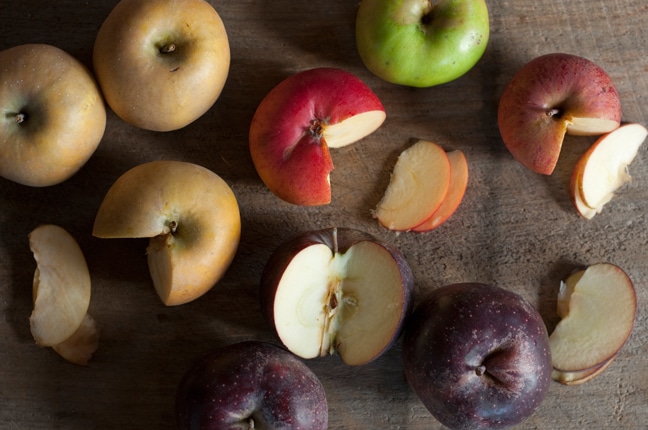
Among the 80 varieties of organic apples that Michael Phillips grows are (clockwise from upper left) Golden Russet, Erwin Bauer, Rhode Island Greening, Cox’s Orange Pippin, and Black Oxford. Image by Stacey Cramp
We’re very much looking forward to getting these apple trees and their associated guilds of herbs, shrubs and berries designed into and planted within both the nucleus forest garden at Milkwood Farm, and also the second-phase forest garden, which will be watered with greywater from the tinyhouse.
All of which will be pollinated by the honeybees in the Warré apiary just uphill, and partially fertilized (fingers crossed) with a little integrated forest garden duck system… come on Spring!
Further apple lurve:
- Michael Phillips’ website, with lots of resources and articles
- Organge Pippin – UK website with lots of info and heritage fruit tree register
- Mt Telopea Nursery – home of ‘Pete the Permie’, his wife Sylvia, and all their apples. The Allens’ craft fruit trees to order for a wide range of climates, and are generous with their knowledge.
Many thanks to both Peter Allen and Graham Brookman of the Food Forest for their help through the apple woods!
>> More posts and resources on designing and implementing edible forest gardens
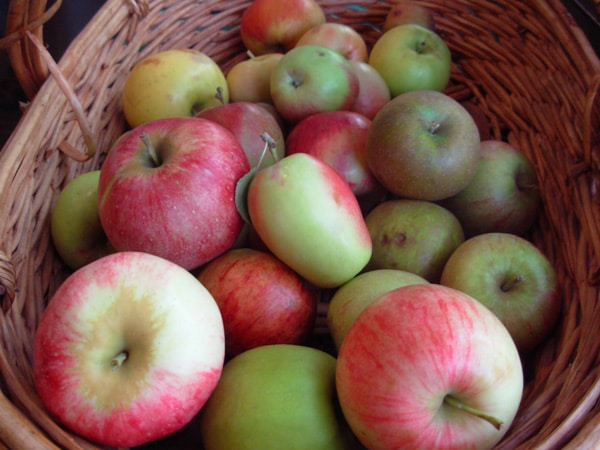
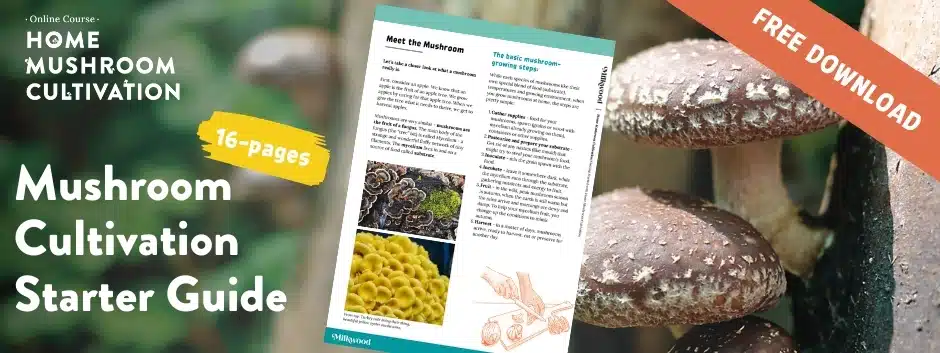
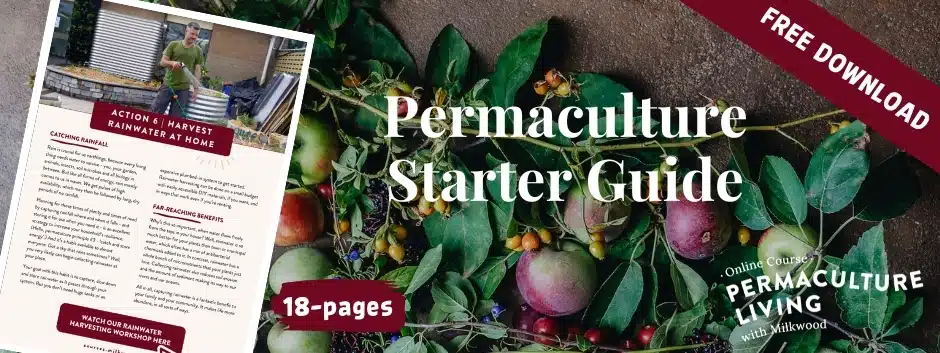
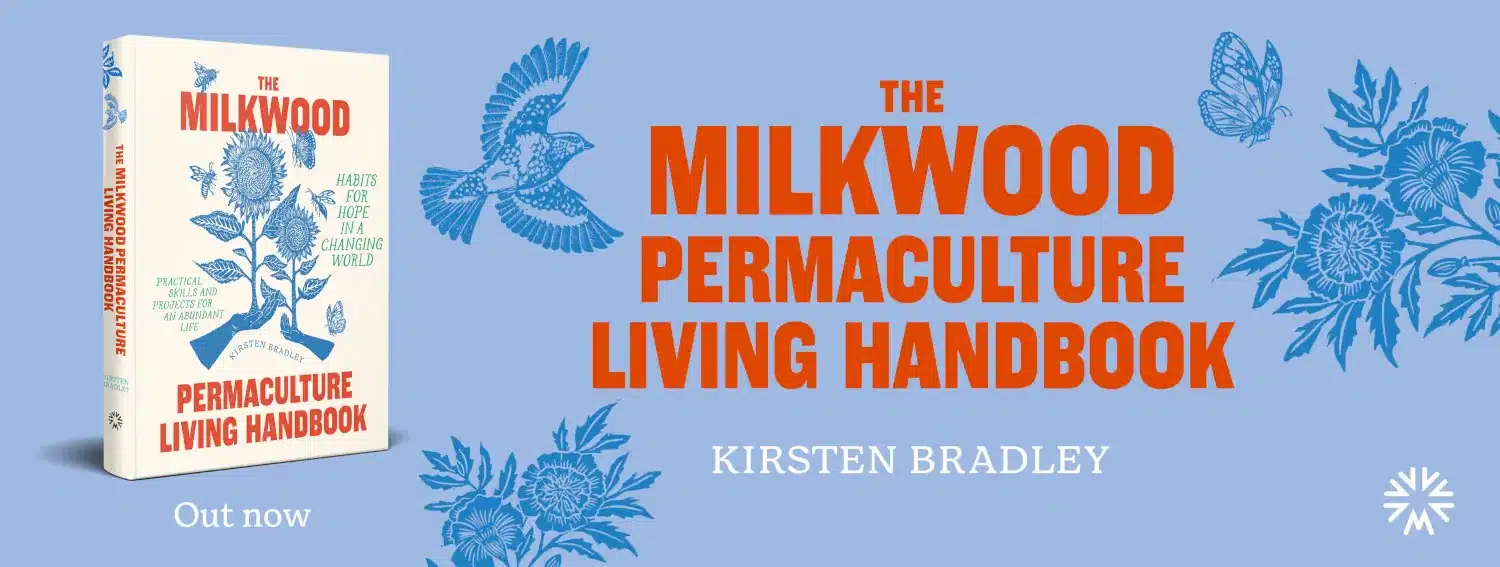
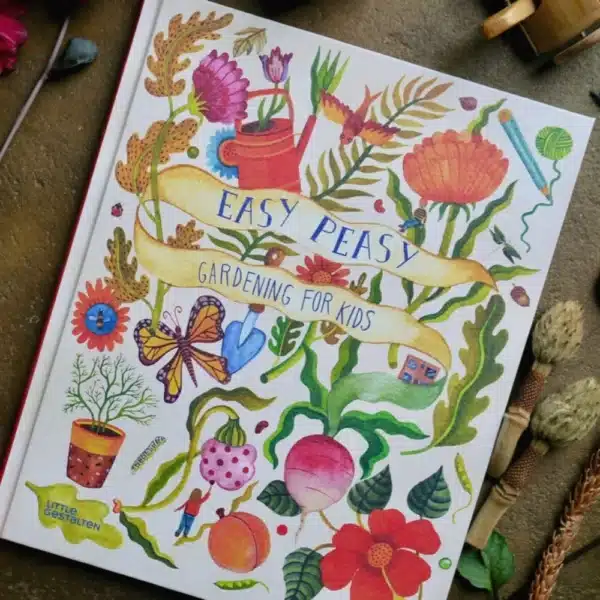
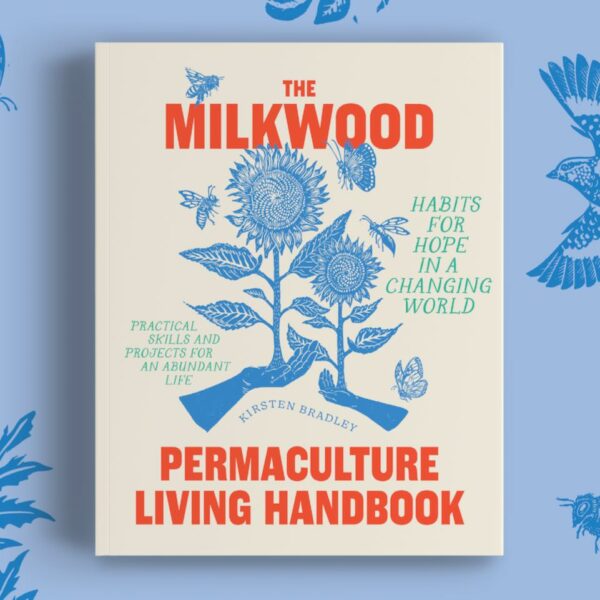







Finally Milkwooders, some apples! Huzzah for you! Note that Kingston Black and Cox’s Orange aren’t the easiest trees to grow (prone to scab). Lord Lambourne is just as tasty as Cox’s but an easier tree. For a good early variety (ripens around Christmas here at Hampton) try Tydeman’s Early Worcester, Catshead is almost unbeatable for purees, Pine Golden Pippin is a wonderfully zippy mid-season dessert variety, and for cider you might do better with something like Yarlington Mill or Improved Foxwhelp. As a general rule the best keepers tend to be firm, late ripening varieties. The Holistic Orchard is a… Read more »
That’s the business. Thanks Justin! Will keep all your points in mind 🙂
If your looking at cider apples I would research the ones in Normandy where the best cider comes from. Just a thought.
Sister Janet
Beit Mery Hermitage
Just picked up our heritage apples (and a pear and plum) from our local (literally) heritage apple nursery. So love the heritage varieties. Can’t help you with what would suit your climate though, we are pretty different down here in gippsland (much wetter and very thankfully a very deep and fertile top soil). Belle de Boskoop apples are very yummy though, and I also like summer red. Love a good cooker too, I’m putting in Dr Hogg this year, maybe to celebrate your piggies it would be a good one to put in?
Have to agree with Justin, Lord Lambourne is a very tasty and easy to grow eating apple. For a cooking apple the Bramley has to be one of the tastiest and the English standard for apple pies. Stun’sail Boom River Nursery on Kangaroo island have a comprehensive range of grafted varieties at good prices. Failing that, have a crack at grafting. Get in contast with your local Rare Fruits society for exchange of scion wood. There is a whole underground network of people out there passionate about saving old varieties. Robert Brew from Tanunda in SA is a great source.… Read more »
I’ve been damn impressed with our trees from Yalca Fruit Trees. Their apples are outperforming the socks off the other apple trees in our espalier chook run (that is the trees are espaliered, not the chooks, obviously). We’re in a subtropical climate so not sure the varieties that suit here would be right for your climate. Husband is from the UK and his auntie grows this magnificent variety that is the hugest fruit – more like a grapefruit size – she bakes them. Variety name escapes me.
@Liesel could be 20ounce? It’s a big ‘un! We’re planting a heritage orchard here in WA, hunting old abandoned trees or orchards to collect bud/scion wood rather than just buying from the nursery. More romance! Also keen to ‘rescue’ from original trees, like the first ever Lady William, which fortunately I’ve found still grows on a friends farm in Donnybrook. I’m also looking for one for I think is called Lally – a stripey Delicious sport my mum and her sisters used to LOVE. So yeh – preserving local heritage first, then casting the net further. I don’t think we’ll… Read more »
Anyone out there got a favourite heritage apple? I visited the cetral tree crop research centre in whanganui NZ and mine was a tie between the Kentish fill-a-basket (massive and crisp) and monty’s surprise (discovered by the road side, crisp, big and massively high in antioxidants.
Also my understanding here is that tassie Has the largest variety of apples in Australia (hence the name apple isle) after each state was given a type of fruit tree by the DPI way back when.
Grove Heritage Nursery now manages the former Tasmanian DPI heritage pome fruit collection – more than 600 varieties. You can download their list at http://www.oak.org.au/2010/wp-content/uploads/2010/11/Grove-Heritage-Nursery-Cultivar-A3-to-A4-Flyer_May-2011-Version01_PROOF3.pdf
thanks Justin!
Plant russets for the best cider. Their complex sweetness increases with minor frost. They are so rich and delightful. Cider is infinitely better when the russet harvest comes in.
Have you had a yarn to David Pickering at DPI in Orange ? I reckon you need to. He’s a cider-man and has a wealth of knowledge, and isn’t too far fom you folks either.
Will hunt him down – ta 🙂
We’ve planted heritage apples, over 20 varieties, from Woodbridge Fruit Tree Nursery over the past 4 years. We’ve been very happy with the quality of their trees – we’ve only lost a couple, mostly due to poor drainage problems (we’ve also ordered from Yalca Fruit Trees more recently and they seem good so far too). Last season we got to taste some very nice Red Galas, Lord Lambourne, Vista Belas, Pink Lady, Freyburgs and Berner Rose. We’ve noticed that, at least for the last season, our varieties ripened a lot earlier than the approximate times given in the Woodbridge catalogue… Read more »
p.s.s. we also harvested some nice Sturmers – a good all rounder and also supposed to be a good storer (can’t comment on that because ours were all eaten this season!)
http://www.woodbridgefruittrees.com.au/woodbridgefruittrees/apples/83-sturmer.html
and here’s the description of the Freyburg:
http://www.woodbridgefruittrees.com.au/woodbridgefruittrees/apples/68-freyberg.html
Growing up my family used to get Stayman’s Winesap apples from an Italian man up At Mt Kembla. Unfortunately he is no longer there.. I have not tried a lot of heritage apples though I still rave to ppl about this beautiful variety!
I bought 4 varieties from Yalca’s fruit trees about 2 years ago and they are going great guns! Even had a small harvest from each tree.
After 20 years of growing heritage apples organically it fills us with delight to read your newsletter and hear such enthusiasm for permaculture organics and our rich fruit heritage. Can we suggest Dr Hogg’s book is as much a treasure as the apple named for him.
Sally and Dale Salter
Blayney
I second (or third) the idea of learning to graft if you don’t know already. Grafting skills give you a great deal of flexibility and will save you money over the years. Many varieties are not available through nurseries, and if something doesn’t work out, you can framework the tree over to other varieties. I have one tree with about 140 varieties on it and I’ll be tasting about 70 to 80 varieties this season. Also, you can plant diagonal cordons (aka oblique cordons) as close as 18 inches apart in the row for trialing varieties. they will bear early,… Read more »